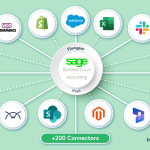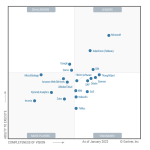Data Discovery: Your First Step to BFFship
Imagine your data as a new friend you’ve just met. You’re excited to get to know them better, but you don’t know where to start. That’s where Data Discovery comes in. It’s like your personal guide to the world of data, helping you explore, understand, and connect with your newfound friend.
What is Data Discovery?
Data Discovery is a process of exploring data to find patterns, trends, and insights. It’s like a treasure hunt, where you’re searching for hidden gems within your data. With Oracle BI, this process is made easy and enjoyable.
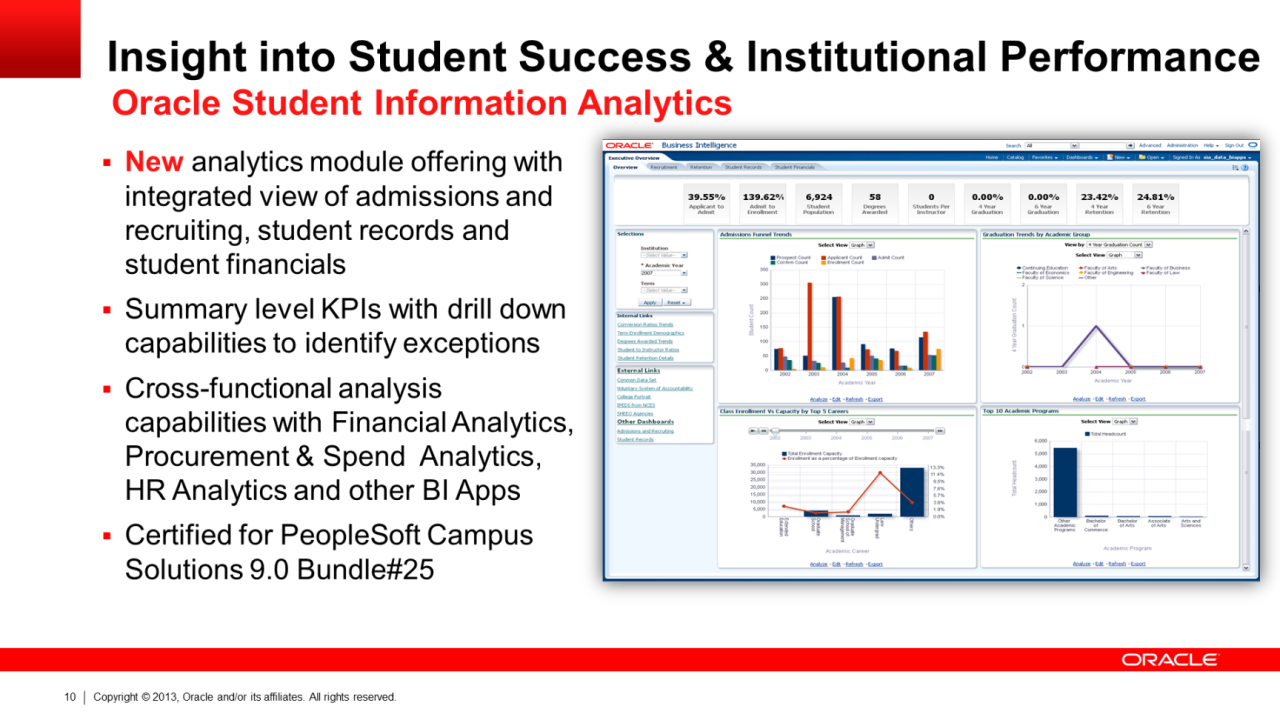
How Does Data Discovery Work?
1. Connect to Your Data: The first step is to connect Oracle BI to your data sources. This can be anything from databases and spreadsheets to cloud applications.
2. Explore and Visualize: Once connected, you can start exploring your data. Create visualizations like charts, graphs, and maps to make complex information more understandable.
3. Ask Questions: Use Oracle BI’s powerful search functionality to ask questions about your data. For example, you might ask “What were our sales in Q3?” or “Which product is the most popular?”.
4. Analyze and Interpret: Oracle BI will provide you with answers and insights based on your questions. Analyze these results to uncover trends, patterns, and anomalies.
Why is Data Discovery Important?
Data Discovery is crucial for businesses because it helps them make informed decisions. By understanding your data, you can:
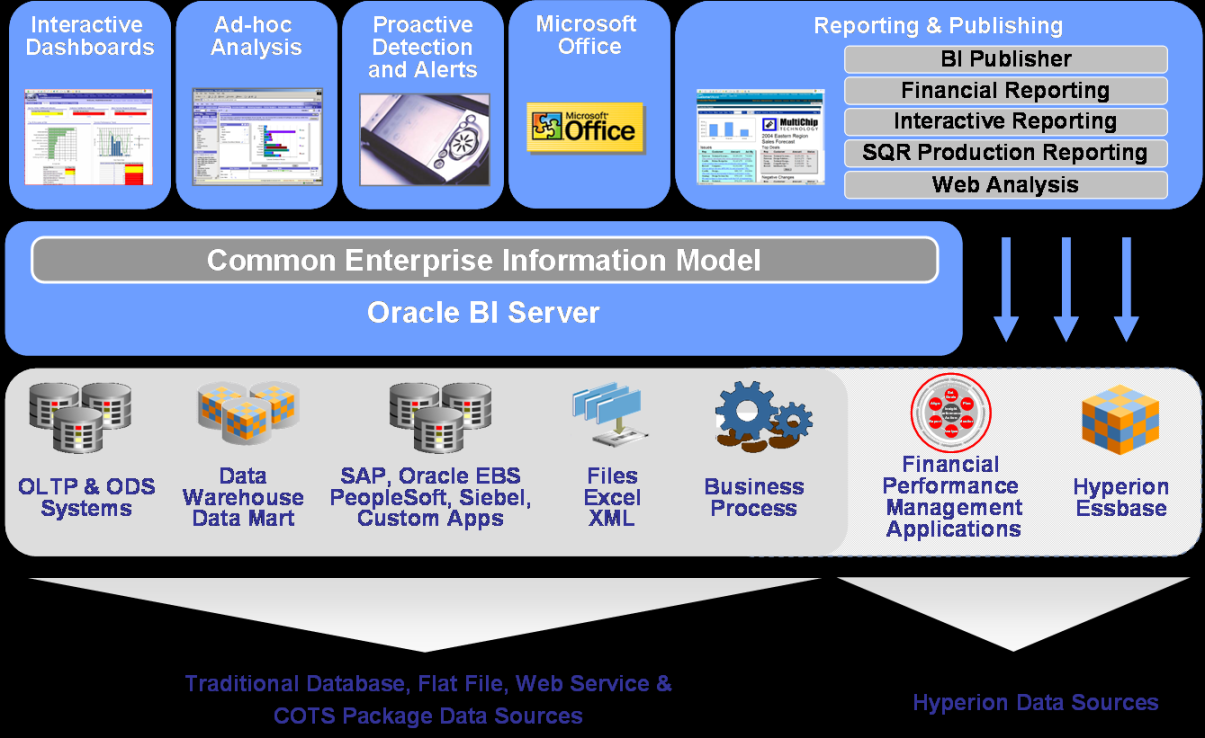
Identify opportunities: Discover new markets, products, or services.
Tips for Effective Data Discovery
Start with a clear goal: Know what you want to achieve with your data exploration.
Real-World Example: A Retail Business
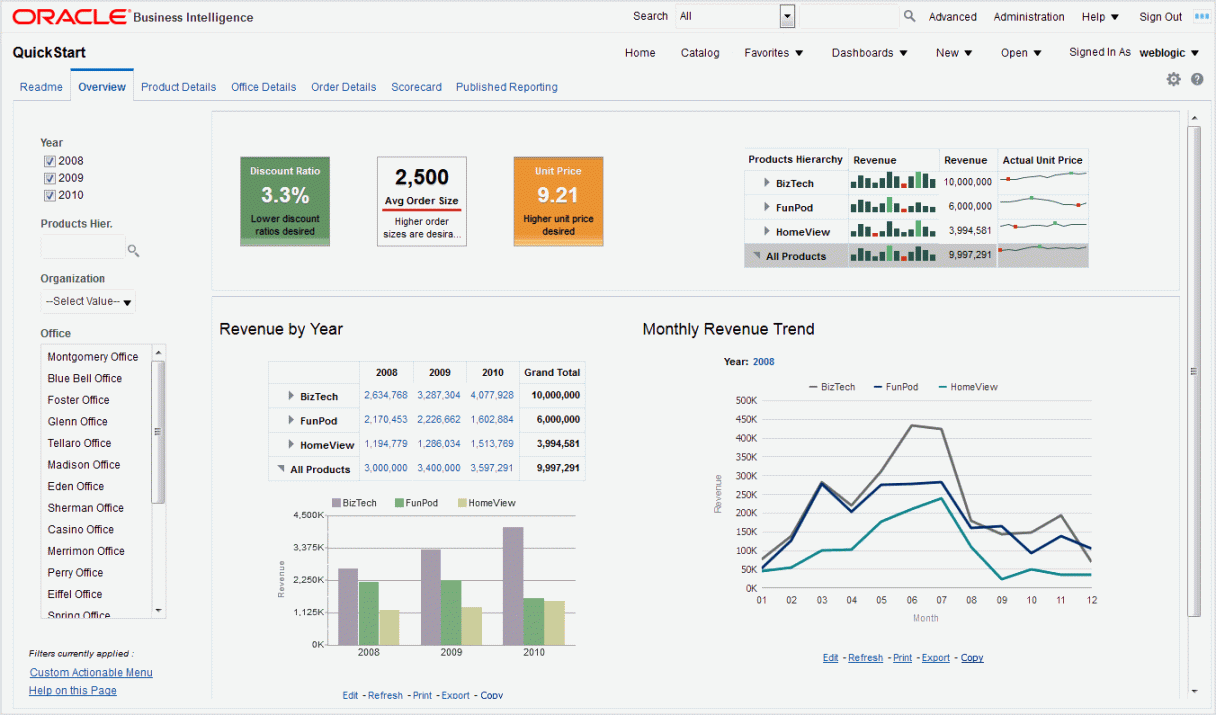
A retail business can use Data Discovery to:
Analyze sales trends: Identify seasonal patterns and adjust inventory levels accordingly.
Conclusion
Data Discovery is the first step to building a strong relationship with your data. By exploring, understanding, and analyzing your data, you can unlock valuable insights that will help your business thrive. With Oracle BI, this process is made easy and enjoyable. So, start your data discovery journey today and turn your data into your BFF!
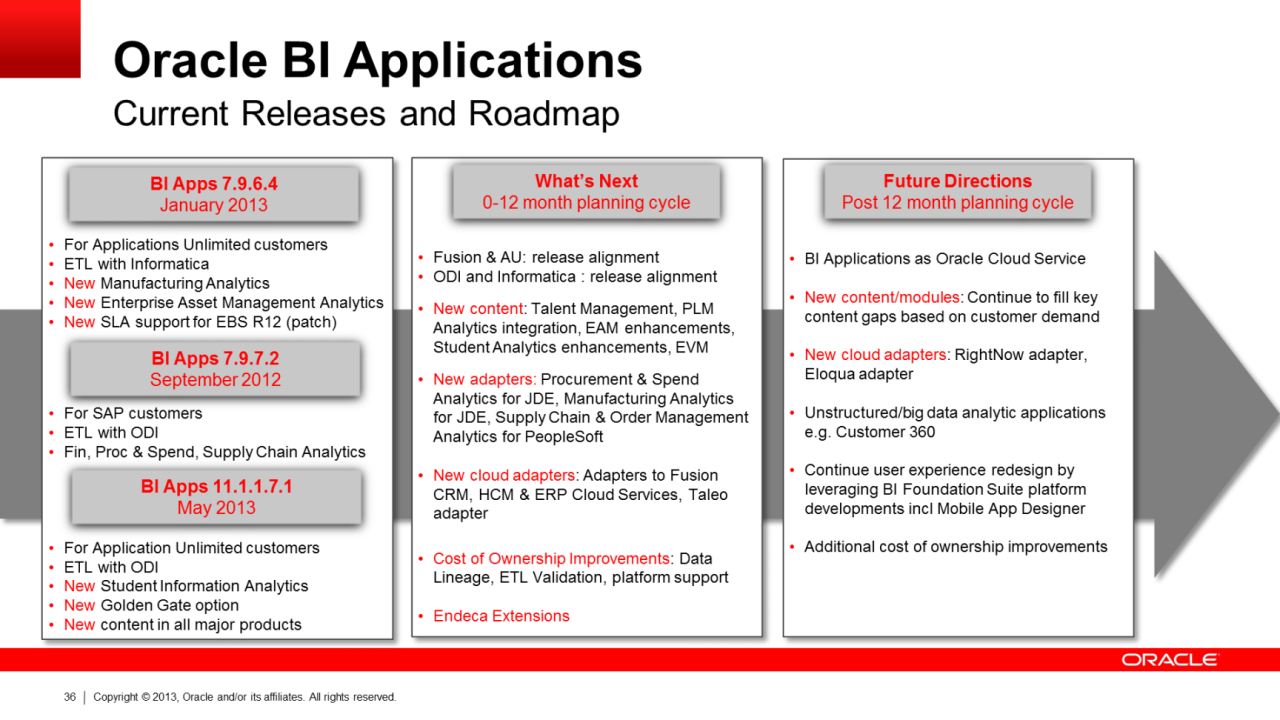
2. Harnessing the Power of Dashboards
Imagine having a personal assistant that could instantly provide you with a tailored overview of your day, highlighting important tasks, upcoming appointments, and even suggesting the best outfit based on the weather. That’s essentially what a well-crafted dashboard does for your data. It’s a visual tool that transforms raw information into actionable insights, making it easier to understand, analyze, and make informed decisions.
The Art of Dashboard Design
Creating an effective dashboard is both an art and a science. It requires a keen eye for aesthetics, a deep understanding of your data, and a touch of creativity. Here are some key elements to consider:
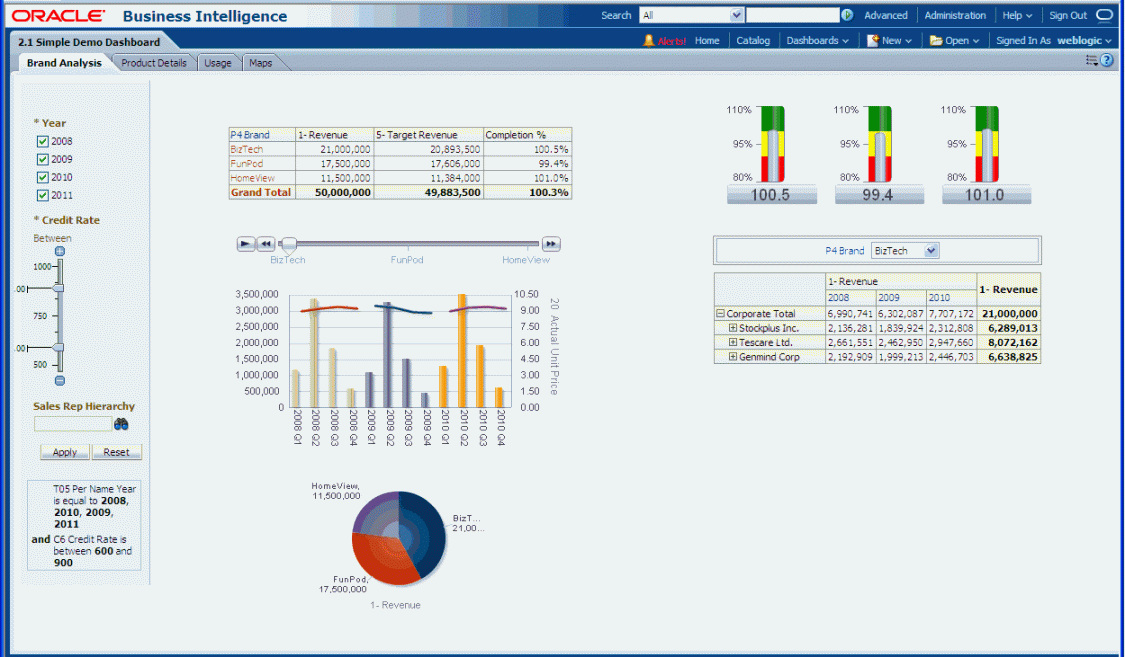
Clear and Concise Metrics: Choose metrics that are relevant to your goals and easy to interpret. Avoid overwhelming your audience with too much information.
Real-World Examples
Let’s explore a few practical examples of how dashboards can be used to address specific business challenges:
Sales Performance: A sales dashboard might track metrics such as total revenue, average deal size, sales by region, and sales rep performance. This can help identify top performers, identify areas for improvement, and forecast future sales.
Tips for Creating Effective Dashboards
Start with a clear objective: Define what you want your dashboard to achieve before you start designing.
By following these guidelines, you can create dashboards that are both visually appealing and informative, helping you make data-driven decisions and achieve your business goals.
3. Data Visualization: The Art of Storytelling
Imagine you’re trying to explain a complex concept to a friend. Would you just recite a list of facts and figures? Or would you use stories, analogies, and visual aids to make it easier to understand? Data visualization is the equivalent for data. It’s the art of transforming raw data into compelling narratives that can be easily understood and acted upon.
Why is data visualization so important?
Enhanced Understanding: Visuals can help people grasp complex information quickly and intuitively.
Key techniques for effective data visualization:
1. Choose the right chart type: There are many different chart types available, each with its own strengths and weaknesses. Choose the chart type that best suits your data and the message you want to convey. For example, use a bar chart to compare categories, a line chart to show trends over time, and a pie chart to show proportions.
2. Use color wisely: Color can be a powerful tool for highlighting important information and making your visualizations more visually appealing. However, it’s important to use color sparingly and consistently. Too much color can be overwhelming and distracting.
3. Keep it simple: Don’t clutter your visualizations with too much information. Stick to the essentials and focus on the key message you want to convey.
4. Label everything clearly: Make sure to label all axes, data points, and other elements of your visualization. This will help viewers understand what they’re seeing.
5. Tell a story: Think of your visualization as a story. What is the main point you want to make? How can you use visuals to tell that story in a compelling way?
Examples of effective data visualization:
Interactive maps: These can be used to show geographic data in a visually appealing and interactive way. For example, you could use a map to show sales data by region or customer demographics.
Tools for data visualization:
There are many tools available for data visualization, ranging from simple spreadsheet software to powerful specialized tools. Some popular options include:
Oracle BI: Oracle Business Intelligence is a comprehensive data visualization and analytics platform that offers a wide range of features and capabilities.
By mastering the art of data visualization, you can transform your data into a powerful tool for understanding, communicating, and acting on information. So, why not make data your best friend?
4. Unleash the Power of Data Visualization
Imagine your data as a treasure trove, filled with insights that can guide your decisions and drive your business forward. But what if this treasure is hidden, buried beneath layers of numbers and statistics? That’s where data visualization comes to the rescue.
Data visualization is like putting on a pair of magic glasses. When you look through these lenses, your data transforms from a jumble of numbers into a clear, compelling story. It’s a way to make complex information easy to understand and act upon.
Why is data visualization so powerful?
Clarity: It helps you see patterns and trends that might be hidden in raw data.
Here are some popular data visualization techniques:
Bar charts: Perfect for comparing different categories.
But how do you choose the right visualization for your data?
The key is to consider your audience and the story you want to tell. For example, if you’re trying to persuade your boss to invest in a new project, a visually appealing chart that highlights the potential ROI might be more effective than a long, text-heavy report.
Let’s take a real-world example.
Imagine you’re a marketing manager for a clothing company. You want to understand how different age groups are responding to your latest product line. By creating a bar chart that compares sales by age group, you can quickly see if your marketing efforts are reaching your target audience.
Tips for creating effective data visualizations:
Keep it simple: Avoid clutter and excessive detail.
With Oracle BI, you have access to a powerful toolkit for creating stunning data visualizations. The platform offers a wide range of chart types, customization options, and interactive features that can help you bring your data to life.
By mastering the art of data visualization, you can transform your data into a valuable asset that drives your business forward. So, put on those magic glasses and start exploring the treasure trove of insights that lies within your data.
5. Building a Dashboard: The Art of Storytelling
Imagine your dashboard as a captivating story, where each visualization is a page filled with intrigue and revelations. Building a dashboard isn’t just about displaying data; it’s about crafting a narrative that resonates with your audience. Here’s how you can turn your data into a compelling story:
1. Define Your Audience: Who will be interacting with your dashboard? Understanding their needs, interests, and level of technical expertise is crucial. Tailor your storytelling to their specific preferences.
2. Identify Your Key Messages: What do you want your audience to understand or take away from the dashboard? Clearly define your key messages and ensure they are reflected in your visualizations.
3. Choose the Right Visualizations: Different visualizations serve different purposes. Bar charts are great for comparing categories, line charts are ideal for showing trends over time, and pie charts can be used to represent proportions. Select the visualizations that best convey your story.
4. Create a Logical Flow: Arrange your visualizations in a way that guides the viewer through your story. Start with a high-level overview and gradually delve into more detailed insights. Use arrows, lines, or annotations to indicate the flow of information.
5. Tell a Story: Use storytelling techniques to engage your audience. Create a narrative arc, introduce characters (your data), and build suspense. For example, you could start with a dramatic question and gradually reveal the answer through your visualizations.
6. Use Colors and Formatting Wisely: Colors can evoke emotions and draw attention to specific elements. Use them strategically to highlight key points and create visual interest. Consistent formatting, such as fonts, styles, and spacing, can improve readability and enhance the overall aesthetic.
7. Add Context and Explanations: Provide context for your visualizations to help your audience understand the data. Include titles, labels, and tooltips to explain what is being shown. Consider adding annotations or comments to highlight important trends or insights.
8. Keep it Simple: Avoid overwhelming your audience with too much information. Focus on the most essential points and present them in a clear and concise manner. Use white space effectively to create a visually appealing and easy-to-read dashboard.
9. Test and Iterate: Once you’ve built your dashboard, test it with your target audience. Gather feedback and make necessary adjustments to improve the storytelling experience. Continuously iterate on your dashboard to ensure it remains relevant and engaging.
10. Let Your Creativity Shine: Don’t be afraid to experiment and have fun with your dashboard design. Incorporate your personal style and creativity to make it truly unique. A well-designed dashboard can be a powerful tool for communicating insights and driving decision-making.
Remember, building a dashboard is an iterative process. It may take multiple attempts to craft a story that resonates with your audience. Be patient, experiment, and have fun!
6. Leverage Oracle BI Mobile for On-the-Go Insights
Imagine having your data insights right at your fingertips, wherever you go. That’s the power of Oracle BI Mobile. This mobile app transforms your smartphone or tablet into a powerful analytics tool, allowing you to stay connected to your data and make informed decisions on the fly.
Key Benefits of Oracle BI Mobile:
Real-time access: Stay up-to-date with the latest data trends and KPIs, even when you’re away from your desk.
How to Make the Most of Oracle BI Mobile:
1. Download and install: Begin by downloading the Oracle BI Mobile app from your device’s app store.
2. Connect to your environment: Establish a connection between your mobile device and your Oracle BI environment.
3. Explore dashboards: Discover the wealth of pre-built dashboards and reports available to you.
4. Create custom dashboards: Tailor your dashboards to your specific needs by adding, removing, or rearranging components.
5. Drill down into details: Dive deeper into your data by drilling down into specific metrics and dimensions.
6. Share insights: Easily share your findings with colleagues and stakeholders through email or social media.
Real-World Use Cases:
Sales teams: Track sales performance, identify top-selling products, and monitor customer behavior in real-time.
Tips for Success:
Optimize performance: Ensure your mobile device has sufficient storage and processing power for optimal app performance.
Oracle BI Mobile is more than just an app; it’s a powerful tool that empowers you to make data-driven decisions wherever you are. By leveraging its capabilities, you can stay connected to your data, collaborate effectively, and drive business success. So, why wait? Download Oracle BI Mobile today and start making data your BFF on the go!
7. Crafting a Data-Driven Culture
In the realm of business, data is more than just numbers on a spreadsheet; it’s the lifeblood that fuels innovation, decision-making, and overall success. Yet, many organizations struggle to harness the full potential of their data, leaving it untapped and underutilized. This is where Oracle Business Intelligence (OBIE) comes into play, transforming raw data into actionable insights that can be leveraged to drive growth and efficiency.
One of the most critical aspects of leveraging OBIE is fostering a data-driven culture within your organization. This means creating an environment where everyone, from top executives to frontline employees, understands the importance of data and how it can be used to improve their work. It’s about empowering people with the tools and knowledge they need to make data-informed decisions.
Here are some key strategies for crafting a data-driven culture:
1. Executive Sponsorship:
2. Data Literacy Training:
3. Data Governance and Quality:
4. Accessible Data Visualization:
5. Data-Driven Decision-Making:
6. Collaboration and Knowledge Sharing:
7. Data Ethics and Privacy:
By implementing these strategies, you can create a data-driven culture that empowers your employees, drives innovation, and ultimately helps your business achieve its goals. Remember, data is your BFF, and by leveraging it effectively, you can unlock its full potential.
Number 8: The Power of Dashboards
Imagine having a personal assistant that could instantly provide you with a tailored overview of your day, highlighting key tasks, appointments, and weather conditions. This is essentially what a well-crafted dashboard does for your data. It transforms raw information into a visual, interactive story that’s easy to understand and act upon.
Why Dashboards Matter
Clarity: Dashboards present data in a digestible format, eliminating the need to sift through spreadsheets or reports.
Crafting the Perfect Dashboard
Building a powerful dashboard is an art and a science. Here are some key considerations:
1. Define Your Goals: What do you want your dashboard to achieve? Are you trying to track sales performance, monitor inventory levels, or analyze customer behavior?
2. Choose the Right Metrics: Select key performance indicators (KPIs) that align with your goals. Avoid overwhelming your dashboard with too much data.
3. Select Appropriate Visualizations: Bar charts, line graphs, pie charts, and maps are just a few visualization options. Choose the ones that best convey your message.
4. Consider Your Audience: Tailor your dashboard to the needs and preferences of your users. Avoid using jargon or overly complex visualizations.
5. Leverage Storytelling: Use color, layout, and annotations to create a narrative that guides your audience through the data.
6. Ensure Interactivity: Allow users to drill down into details, filter data, and customize the dashboard to their preferences.
7. Test and Iterate: Continuously evaluate your dashboard’s effectiveness and make adjustments as needed.
Dashboard Examples
Let’s explore a few real-world dashboard examples to illustrate their potential:
Sales Dashboard: A sales team might use a dashboard to track sales by region, product, and sales representative. They could also visualize sales trends over time and identify top-performing products.
Beyond the Basics
While the core principles of dashboard design remain consistent, technology advancements continue to push the boundaries of what’s possible. For example, the integration of artificial intelligence (AI) can enable predictive analytics, allowing you to anticipate future trends and make proactive decisions. Additionally, the rise of mobile devices has led to the development of responsive dashboards that can be accessed on smartphones and tablets.
By harnessing the power of dashboards, you can transform your data into a valuable asset that drives informed decision-making, fosters collaboration, and ultimately helps you achieve your goals.
9. Embrace the Power of Dashboards
Imagine having a personal assistant who instantly gives you a snapshot of your day, highlighting important tasks, upcoming appointments, and even the weather forecast. That’s the power of a dashboard. In the realm of data, dashboards are your personalized digital assistants, transforming raw data into actionable insights.
A Dashboard’s Purpose
Dashboards are interactive visualizations that present key performance indicators (KPIs) and metrics in a clear, concise, and visually appealing manner. They are designed to help you quickly understand complex data trends, identify patterns, and make data-driven decisions.
Key Elements of a Great Dashboard
Clarity: A well-designed dashboard is easy to understand, even for those without a strong technical background. Avoid clutter and excessive information.
Building Your Dream Dashboard
1. Identify Your Goals: What do you want to achieve with your dashboard? Are you looking to track sales performance, analyze customer behavior, or monitor operational efficiency?
2. Select Key Metrics: Determine the most important metrics that will help you measure progress towards your goals.
3. Choose Visualization Types: Decide which types of visualizations (charts, graphs, tables) will best represent your data. Consider factors like data type, audience, and desired level of detail.
4. Design Your Layout: Arrange your visualizations in a logical and visually appealing manner. Use color, size, and placement to highlight key information.
5. Add Filters and Drill-Downs: Incorporate filters and drill-down capabilities to allow users to explore different data subsets.
6. Test and Iterate: Share your dashboard with colleagues and gather feedback. Use their insights to make improvements and refine your design.
Real-World Examples
Sales Dashboard: Track sales performance by region, product, and sales representative. Identify top-performing products and areas for improvement.
Tips for Effective Dashboard Usage
Set Goals: Clearly define the goals you want to achieve with your dashboard.
By leveraging the power of dashboards, you can transform your data into a valuable asset that drives informed decision-making and helps you achieve your goals. Embrace the potential of dashboards and make data your best friend.
Data visualization is like a magic wand that transforms raw numbers into a captivating story. It’s the art of turning complex information into easy-to-understand visuals that resonate with your audience. Imagine a world where spreadsheets no longer induce yawns, but instead inspire awe and excitement. With Oracle BI, you can create stunning and insightful visualizations that make your data come alive.
The Art of Storytelling
Think of your data as a novel waiting to be written. Data visualization is the author who weaves the narrative, crafting a compelling story that keeps your readers engaged. By using charts, graphs, and other visual elements, you can highlight key trends, patterns, and outliers that might otherwise be lost in a sea of numbers.
Choosing the Right Visual
Not all visualizations are created equal. The key is to select the right visual for the job. For example, a bar chart is perfect for comparing categories, while a line chart is ideal for showing trends over time. Consider the message you want to convey and the audience you’re trying to reach when making your choices.
The Power of Color
Color plays a crucial role in data visualization. It can help to draw attention to specific elements, improve readability, and create a visually appealing presentation. Use color strategically to highlight key points, differentiate data series, and evoke emotions. Remember, color can be a powerful tool, but it’s important to use it wisely to avoid overwhelming your audience.
Interactivity: A Game-Changer
One of the most exciting features of Oracle BI is its ability to create interactive visualizations. By adding filters, drill-down capabilities, and other interactive elements, you can empower your users to explore the data at their own pace. This not only enhances engagement but also provides valuable insights that might not have been discovered through static visualizations.
Best Practices for Effective Data Visualization
Keep it simple: Avoid cluttering your visualizations with too much information. Stick to the essentials and let the data speak for itself.
By embracing the power of data visualization, you can transform your data into a valuable asset that drives informed decision-making. With Oracle BI, you have the tools and capabilities to create stunning and insightful visualizations that captivate your audience and tell the story of your data. So go ahead, unleash your inner artist and let your data shine!

